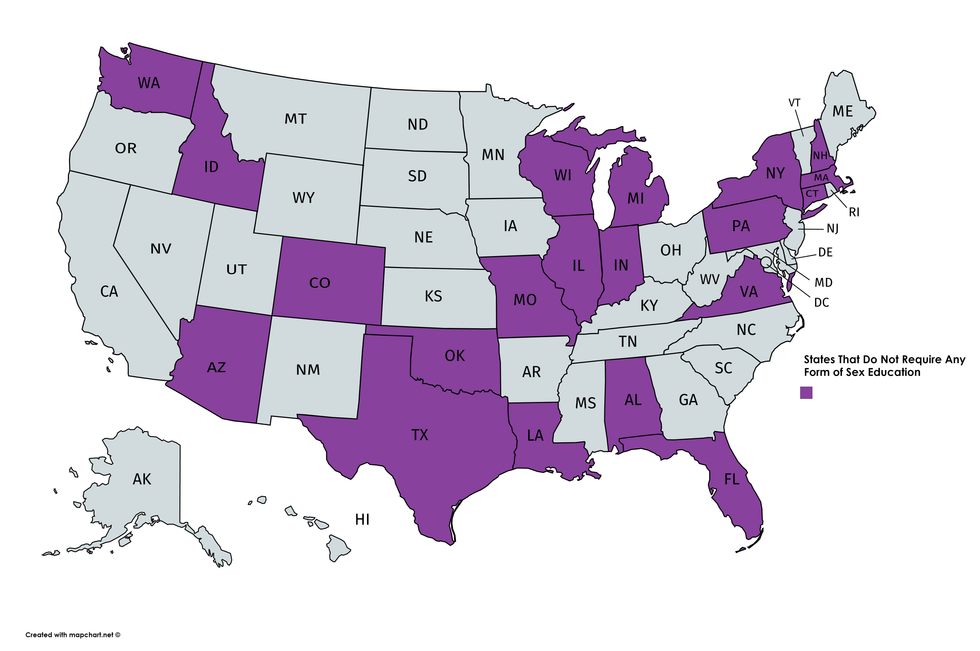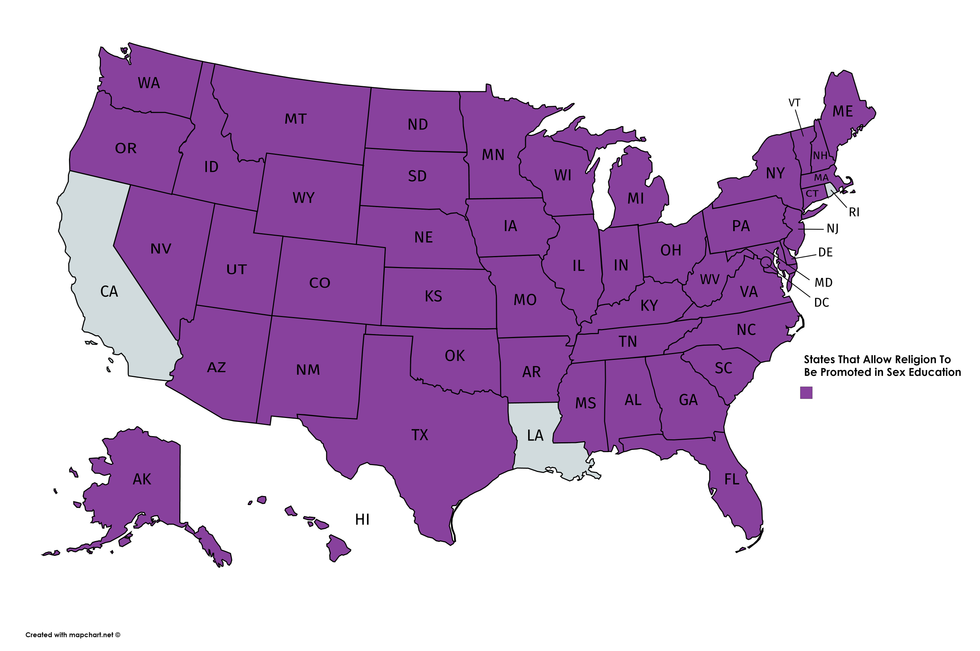The United States of America is a country that hates sex.
But, given the extreme historical and present-day Protestant influences on our laws and societal norms, this is not much a surprise. The hatred is more apparent in the ways — or lack thereof — that sex is taught in schools across the nation.
Less than half of U.S. states mandate sex education and the 24 that do mandate it have a curriculum that is severely lacking. There are only two ways to teach youth about sex in the U.S.: abstinence-only and comprehensive sex education.
Abstinence-only stresses waiting until marriage to engage in sexual activities. Information about sexual and reproductive health, especially education on birth control and having sex safely, is excluded. Additionally, it reinforces negative and harmful gender stereotypes, specifically in regards to female passivity and masculinity. In these programs, both are (incorrectly) correlated to the decreased use of condoms and of birth control. Also, there is no mention of sexual orientation or gender identities. So, what are our youth being taught, exactly?
The federal government has a clear preference for this form of “education” — nicknaming it A.O.U.M (Abstinence-Only Until Marriage). By matching grant incentives and providing direct funding, these programs have received at least 1.5 billion dollars. However, many analyses reveal that abstinence-based programs have very little, if any, effectiveness on the age when sex is first initiated, the number of sexual partners, nor rates of actual abstinence, pregnancy, use of contraceptives, vaginal sex, or sexually transmitted diseases and infections.
Though research has been proven time and time again that abstinence-only educational policies have infinitesimal influence over the prevention of sexual activity, Congress continues to provide funding. In fact, in 2016, funding increased to $85 million dollars a year.
Then-President Barack Obama attempted to terminate A.O.U.M., citing “10 years of opposition and concern from medical and public health professionals, sexuality educators, and the human rights community that A.O.U.M. withholds information about condoms and contraception, promotes religious ideologies and gender stereotypes and stigmatizes adolescents with non-heteronormative sexual identities." He was unsuccessful.
Comprehensive sex education is a step in the right direction, but is still a long way away from what the youth need and what they deserve. It generally consists of the same, tired medical data regurgitated at students. Within this form of sex education, key topics and issues — such as consent, sexual orientation, relationship dynamics, gender identity and expression — are not stressed, if at all mentioned.
When asked what were some topics regarding comprehensive sex education they wished they had been taught in public school or criticisms they had, current undergraduate students had this to say:
“One thing that I personally struggled with a lot, and probably others, too, is the concept of masturbation and self-pleasure. Young teens need to know that it is 100% alright to touch yourself and explore your body.”
“Sex doesn’t instantly lead to having a child. Regarding women, it’s OK to enjoy sex.”
“I wish they talked about birth control and how sex is a good thing.”
“I think consent is the most important thing we need to start talking about in sex ed.”
“I think it would be good to teach kids how to create and maintain healthy emotional relationships with their sexual partners. How to set up boundaries, how to communicate well, and things like that. I think it’s important for sex education to be inclusive of queer people because many have no idea how to have safe sex and they get most of their education from porn, which can be very misleading. I think the emphasis on STDs creates a fear of sex; while talking about them is important, I don’t think that should be the central point.”
It is obvious that sex education needs to focus on more than just the medical data. It needs to go beyond and truly speak about sex. Much of what is taught is, arguably, health education and not sex education. Youth are not adequately prepped on having sex or staying emotionally healthy in relationships. They are not being taught how to pleasure themselves nor how to please their partners. Sex education is only centering cisgendered and straight individuals — where do the trans students, the gender non-conforming, the gay students, the bisexuals, the pansexuals, etc fit in the current curriculum?
However, despite the many flaws of comprehensive sex education, it is still better than A.O.U.M. The American Psychological Association, the American Medical Association, the National Association of School Psychologists, the American Academy of Pediatrics, the American Public Health Association, the Society for Adolescent Medicine, and the American College Health Association have all given official support for comprehensive sex education. Yet, despite this and studies proving its effectiveness in comparison to A.O.U.M., it is barred from federal funding.
State policies permit schools to fail in the education of their students — of all ages. Sex education should not be equated with high school — they are instigating the very behaviors they which to decrease. When individuals receive true comprehensive sex education, they become better equipped to make safe and satisfying decisions regarding their personal sex lives.
Denmark is a wonderful example of what sex education could be. The country has done so well in promoting safe sex practices and avoiding unwanted pregnancies that the nation’s birth rate has dropped so much that the Danish government is encouraging folks to start reproducing younger.
Sex should not be a taboo; sex is natural (and it feels great!), and our youth deserve to be properly educated on it.
























